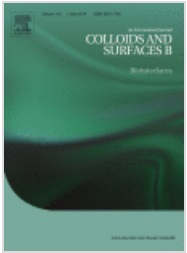The main challenge in antitumor chemotherapy is to enhance the curative effect and minimize the adverse effects of an anticancer drug. Administration of functionalized magnetic iron oxide nanoparticles is one of the strategies to improve sensitivity to cancer chemotherapy, and these nanoparticles are attractive materials that have been widely used in medicine for various applications, including diagnostic imaging and therapeutic applications. In this study, we describe the synthesis and characterization of drug-loaded iron oxide nanoparticles. Our aim was to obtain a biocompatible and injectable nanocarrier with anticancer activity. Iron oxide nanoparticles (IONs) were synthesized by alkali co-precipitation of iron salts followed by coating with our original surface modification agent, poly(ethylene glycol)-block-poly(4-vinylbenzylphosphonate) copolymer (PEG-PIONs). An anticancer drug doxorubicin (DOX), which clinical use is associated with cardiotoxicity, was loaded onto PEG-PIONs (PEG-PIONs/DOX), and to the best of our knowledge, this formulation showed higher drug encapsulation efficiency (drug loading capacity of the nanocarrier was 11.7%) than other formulations previously reported. PEG-PIONs/DOX had a hydrodynamic diameter of about 35 nm and were stable in biological conditions over a period more than one month and showed stable and continuous in vitro drug release and antiproliferative effects on cancer cells. Fluorescent imaging indicated internalization of the PEG-PIONs/DOX in the cytoplasm of cancer cells. Biodistribution studies showed that PEG-PIONs/DOX preferentially accumulate in the tumor region via enhanced permeability and retention effect. In addition, analysis of the serum levels of enzymes indicated that PEG-PIONs/DOX reduced the cardiotoxicity associated with free DOX. These results indicate that PEG-PIONs/DOX have the potential for targeted delivery of antitumor drugs via systemic administration.

